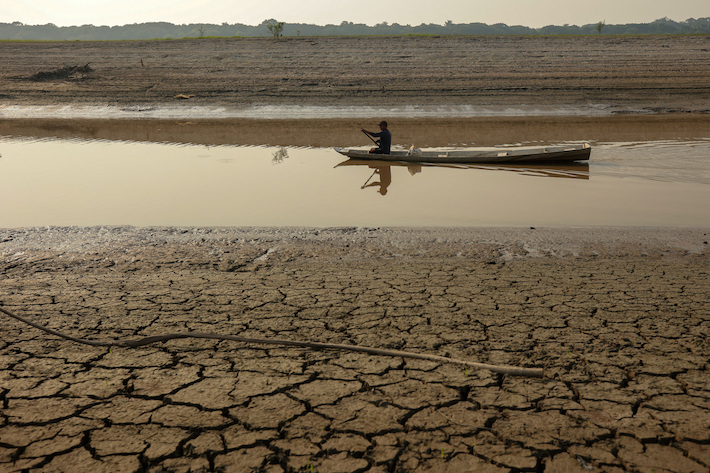Dozens of people have died after the mountainous north of Beijing was hit by extreme weather – for the second time in two years.
More than 80,000 people had to be evacuated and relocated after a year’s worth of rain fell in less than a week, ruining roads and cutting power and communications in more than 130 villages.
Hundreds of flights and many train services were delayed or suspended as the storms peaked on Monday night, stretching the capital’s disaster management capabilities and prompting some experts to call the city a “rain trap”.
ALSO SEE: India Now the Biggest Source of Smartphone Exports to the US
Most of the rain had converged on Beijing’s mountainous north near the Great Wall, with at least 28 deaths reported in the district of Miyun and two in Yanqing, Xinhua reported. The state-run news agency did not say when or how the deaths occurred.
“The flood came in an instant, you just had no buffer,” said Zhai, 33, who runs a grocery shop in Miyun, now a disaster zone amid collapsed bridges, mangled cars and shattered pipelines.
She showed Reuters the marks left behind as the floodwaters receded. They had risen to 1.5 metres (4.92 ft), submerging her shop for hours and ruining her food and beverage stocks.
Liu, who owns a nearby restaurant, was on the verge of tears as she stared at the overturned stools and mud-covered tables in her eatery.
Large appliances like fridges had sat submerged for hours and were likely damaged, said her husband Yang, estimating the damage at more than 100,000 yuan ($14,000).
Mountains ‘trapped’ moist air
Heavy rains began on July 23 and peaked around Beijing and surrounding provinces on Monday, with Miyun swamped by up to 573.5 millimetres of rain (22.6 inches) – levels local media described as “extremely destructive”. The average annual rainfall in Beijing is around 600 mm.
The most intense downpour occurred on Saturday in Beijing’s hilly Huairou, where 95.3 mm of rain fell in one hour.
“The cumulative amount of precipitation has been extremely high – reaching 80–90% of the annual total in just a few days in some areas,” Xuebin Zhang of the University of Victoria in Canada and CEO of the Pacific Climate Impacts Consortium, said.
“Very few systems are designed to handle such an intense volume of rainfall over such a short period,” Zhang said.
The local topography – mountains to the west and north – “trapped” the moist air and forced it upward, amplifying the deluge, he said.
China’s usually arid north has seen record rains in recent years, with some scientists linking it to global warming.
In the summer of 2023, heavy rain and flooding killed at least 33 people in Beijing. Rainfall in the city of Xingtai in the neighbouring Hebei province exceeded 1,000 mm in two days – double the yearly average.
Eight killed in landslide
Heavy rain also pounded the province of Hebei and the city of Tianjin near Beijing.
In Hebei, eight people were killed as a landslide hit a village on Monday, after the region received six months’ worth of rain over the weekend. Four remained missing.
In two villages in Tianjin on Monday, only the rooves of single-storey houses were visible, China Central Television (CCTV) reported.
The emergency management ministry said the disaster relief situation had been “complex and severe”.
Residents pleaded for faster rescue efforts in posts on social media platform Weibo.
“The flood is still coming, and there is still no power or signal, and I still can’t get in touch with my family!” a Weibo user wrote on Tuesday morning.
A foreign correspondent in Beijing interviewed about the flood crisis said the death toll was “issued early” after the crisis, so the tally could easily rise.
- Reuters with additional input and editing by Jim Pollard
ALSO SEE:
China’s Losses From Floods, Disasters in First Half: $7.6 Billion
Bridge to Nepal Washed Away as Flash Floods Rock China
Floods Swamp Cities in Southwest China, And More Storms Due
Firms Underestimating Risks From Carbon-Fuelled Climate Change
Carbon Removals Not Growing Fast Enough For Climate Goals
Climate Change Cost China $32 Billion in Just One Quarter
China’s Billion-Ton Coal Expansion Plan Sparks Methane Fears
Booming Solar Puts 2030 Renewable Energy Goals ‘Within Reach’
China’s Billion-Ton Coal Expansion Plan Sparks Methane Fears
LNG’s Carbon Footprint 33% Bigger Than Coal’s – CC
Forest Fires a Double Whammy for Climate Change Fight – Guardian
Continued Fossil Fuel Investments Put $557 Trillion ‘At Risk’
























